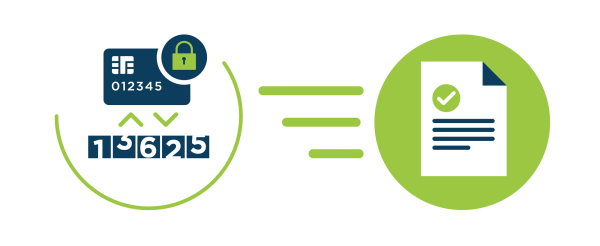EMV® Payment Tokenisation enhances transaction security by removing the most valuable data to a fraudster within a transaction – the primary account number (PAN) – and replacing it with a unique alternative value: a payment token.
Payment tokens support both face-to-face (F2F) and remote payment transactions. To find out more about EMV Payment Tokenisation, including the industry benefits and how it differs from others forms of tokenisation, watch our webcast.
What is EMV Payment Tokenisation?
EMV Payment Tokenisation is the process of replacing a Primary Account Number (PAN) with a unique alternative value that can be defined in where and how it is used.
For example, it could be designed to be used only at a single specific merchant; only on/with a unique consumer device; and/or only with a specific transaction type.
Removing the PAN reduces the value of the information if stolen or compromised.
Why is there a need for tokenisation technologies?
Worldwide e-commerce sales are anticipated to grow by over 12 per cent in 2022[1], projected to total $5.5 trillion. As this strong growth continues, it’s imperative that payment technologies support strong security and convenience.
EMV Payment Tokenisation offers card issuers, their cardholders and merchants the ability to increase protection of payment data throughout a transaction, increasing overall security.
- For merchants, using EMV Payment Tokenisation to replace PANs can help make them less of a criminal target and enable any payment data compromise impacts to be minimised. This potentially reduces costs associated with storing and protecting PANs.
- For cardholders and issuers, the impact from data compromise affecting EMV Payment Tokens will be much less than if a card number (PAN) is exposed.
- Issuers, meanwhile, can reduce card replacements and leverage the ability to control and replace EMV Payment Tokens for specific merchants, devices or transaction types, often without any interaction with the cardholder.
How does EMV Payment Tokenisation differ from others forms of tokenisation?
EMV Payment Tokenisation enables a payment token to be used in a payment transaction from the point of purchase, to an acquirer, and then passing across the payment networks through to payment authorisation by the card issuer.
This offers the benefits of payment tokenisation throughout the payment process. Other forms of tokenisation typically do not pass across payment networks and can happen at different points within the payment process. In the merchant environment, for example, tokenisation can happen between the merchant and the acquirer.
EMV Payment Tokens are compatible with other forms of tokenisation such as acquirer and/or security tokens. They can support all use cases and, importantly, be applicable in any environment which currently uses a PAN.
[1] Insider Intelligence, World e-commerce continues double-digit growth following pandemic push to online, August 2021



